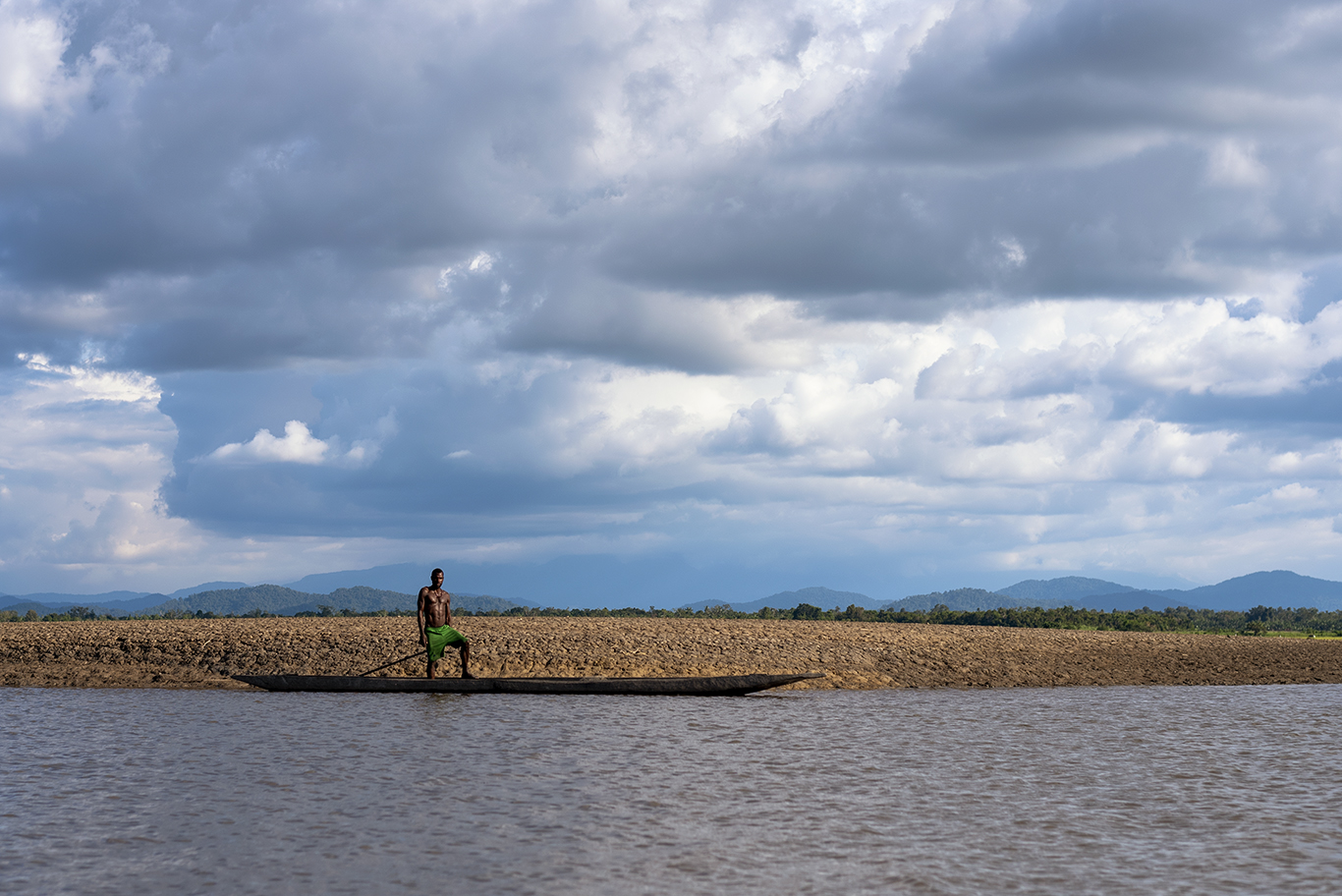
Burned eyes on the Sepik river
Burning your eyes hurts. My eyes are my everything and my greatest fear is not death, not even deep water, but blindness. Being blind really seems like the worst of all. (more…)

Burning your eyes hurts. My eyes are my everything and my greatest fear is not death, not even deep water, but blindness. Being blind really seems like the worst of all. (more…)
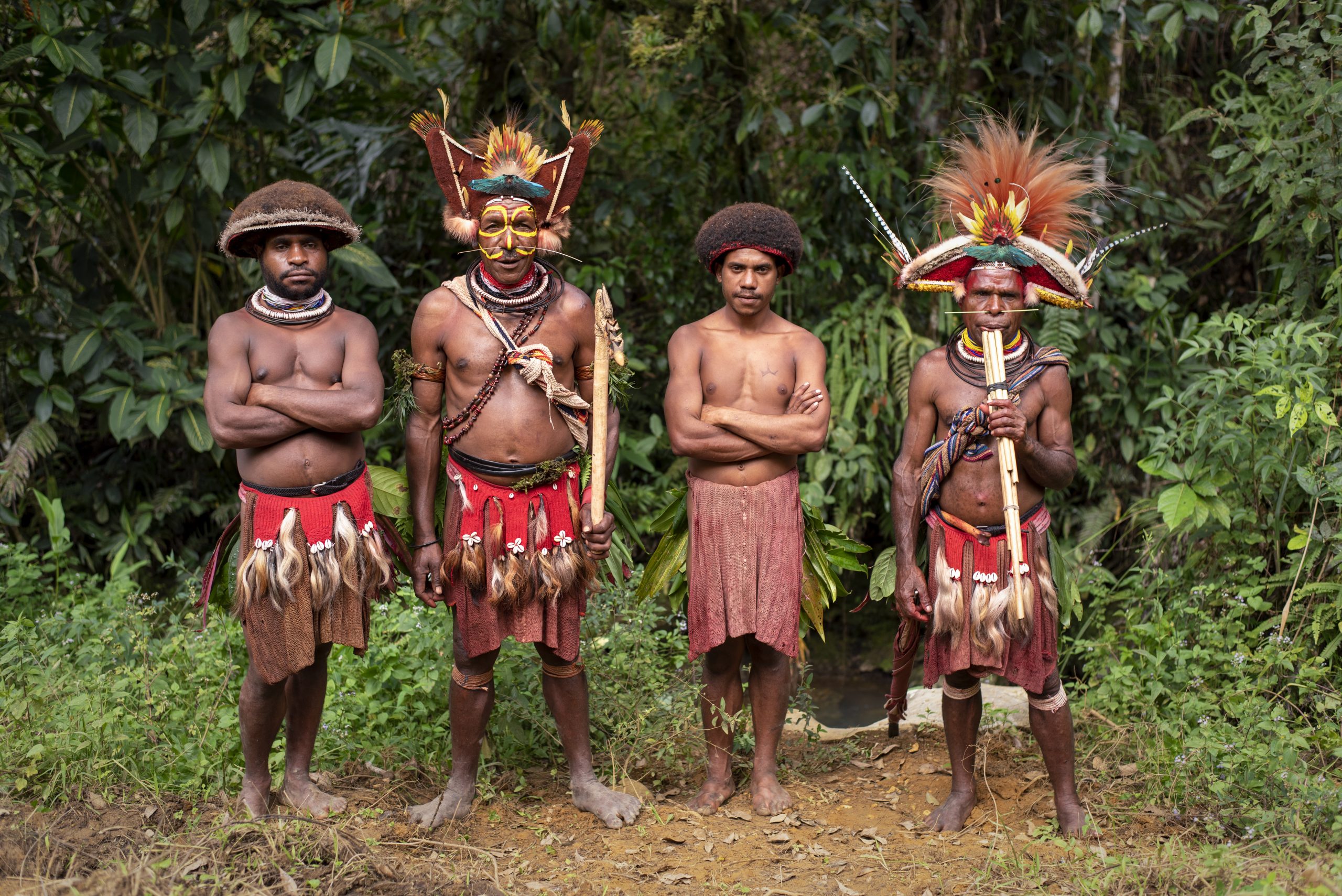
I did not sleep well. The mattress should not bear the name. It’s so thin, with a hard wooden bed underneath that only allowed me to lie on my back. The pillow smells like the many people who used it for me and the beetles outside kept roaring. I also heard a lot of mice walking over our roof and Yuri had to go to the toilet several times. A typical night in Papua New Guinea.
So we are a bit tired when we are served delicious scrambled egg for breakfast. We arrived yesterday at Lukwanda lodge . It was dark and wet when we arrived. It is still wet now but oh how green it is here. And what birds I heard this morning. The lodge is very simple but it is fine. These days we will have to do with little because our luggage is still in London thanks to British Airways. Who then makes little effort to get our luggage here in Papua New Guinea. But we are now in Tari and the chance that the luggage will be brought here is nil.
We quickly throw in a cup of tea before we set off. We don’t really know where to go, but we do know that we are going to eat Mumu, a local delicacy. At least, we assume that.
The trail to today’s village starts near the lodge. Because there is a war going on between two families, we cannot go too far into the wilderness because we may run into people we don’t want to meet. So we stay close to home, but even that makes for an adventure.
And that adventure begins with our introduction to the mud trails of Papua New Guinea. We slide down a kind of hill before balancing on a thin tree trunk over a large river. Then we climb a mud path to walk a bit through fields. We end at a cabin on a hill overlooking the Tari River. A large river where the water has risen considerably due to the amount of rain in recent days. We always bring rain with us, so that will probably not decrease in the coming days.
Actually, we were supposed to cross the river to eat Mumu in the village across the street. But due to the amount of water and the strong current in the river, we decide to make the Mumu at this house. Not a problem for us. It is fun and the owners of the piece of land take us around their land.
The piece of land belongs to two brothers. Their father, who says he’s 120, is now enjoying his old age. There is no longer a mother. The two brothers are the owners, but the sisters, from another mother, are the ones who work the land. Along with a number of pigs. The sister, Ruth, who now works here shows us with hands and feet what she does. English is not spoken here, so we rely on sign language. And that’s fine. I understand that they grow sweet potato and broccoli, that the pigs are helping to turn the land, and that they are glad we are here.

Ruth, one of the sisters
After the small tour we go back to the house on the hill. Here we are going to make the Mumu. A typical dish from Papua New Guinea, and something they are very proud of. First they heat up stones on the fire. Then they dig a hole in the ground. In the meantime, a chicken is killed, vegetables and fruits are cut. Incidentally, I was not allowed to call it slaughter. That is so Western. Here in Papua New Guinea they just call it killing. And they are right.

Hugging a chicken that’s soon gonna be our meal.
The hole in the ground is first filled with the heated stones, on top of that are banana leaves in which the food is placed. The banana leaves are also put back on top to protect the food properly, followed by more warm stones. To close it well, the soil is shoveled on top of the stones. And so the food remains for more than 1.5 hours.

Picking chickens
With us a little longer because just after preparing the Mumu a small disagreement arose between the family members. At least it starts small, with some shouting and screaming. But soon, much to my delight, a machete is brought in. There are also sticks and the family members start to hit each other fairly hard. The machete is mainly used as a threat, but I still think it is dangerous. A number of times I am reassured with “don’t worry, family problems” and big smiles from everyone who does not belong to the family. Thomas tries to appease it several times, to no avail. I just keep a safe distance because even though they won’t attack me, the waving with the machetes doesn’t look very safe. After all, an accident can happen in a small corner.
They are an explosive people and that shows how this quarrel suddenly started. One moment we are all making Mumu and the next moment we are waving machetes. Of course this also concerns pieces of land. Some people have more than others and jealousy plays a big role.

And just as suddenly as it began, so suddenly it ends. The Mumu is ready and it is a shame to waste the vegetables and two chickens because of a pointless argument. So soon we are all enjoying the Mumu again. The banana that went in is very dry, the pawpaw (kind of papaya) is delicious, the sweet potato is also fantastic and I even enjoy eating the chicken.
After dinner it is time for the fortune teller. We are in the Huli Wigmen area. A tribe that I have wanted to see since 2005 when a colleague from MinBuZa went to Papua New Guinea. And now I am here and I have time to meet the Huli Wigmen. The Huli is the largest tribe in the country and is known for the wigs they make from their own hair. There are different wigs for different occasions.

A common wig takes about one year to make. It is the first wig that boys grow when they become men. For a year they sleep with a wooden block under their neck to shape the wig, they do this with a kind of wire. The wig as above is a special one, it takes about 2 to 3 years to make.
On special occasions they color their faces with bright yellow clay (this is called ambua) and are considered sacred. Their bodies make them ocher red. When they dance, during the sing-sing, they do a bird dance. Not to be confused with the terrible bird dance that we know in the Netherlands. With this bird dance they imitate the bird of paradise.

The Huli also do fortune counting. In this region there is one fortune teller left and we are going to meet him. His name is Erebo and he is dressed in his most beautiful Huli costume. Before we can enter the sanctuary, the forefathers must first be awakened. That happens in less than a minute.

Erebo
We walk through a piece of woodland to finally arrive at a small clearing between all kinds of beautiful green trees and plants. In this clearing is a structure of wooden posts and planks on top of each other. I don’t know what it represents, but when we walk around it we suddenly see a number of yellow painted skulls in a row. Thomas knows how to tell us these are the ancestors. Nine generations of skulls lie ahead of us.
Erebo has now started the ceremony. It is a kind of song with words that cannot be understood. Thomas occasionally encourages him to continue singing. And when he stops, it’s time for Yuri to ask a question. He wants to know how the future of his love life is going. Erebo then asks the question to his forefathers. They don’t take long to answer; it stands in front of you
Erebo makes it a bit more exciting and indicates that the person with whom Yuri grows old might be traveling with him. Maybe she’s here. What do you think?
We say goodbye to Erebo and return to the lodge. To rest because tomorrow we are going to make a long trek to a village somewhere in the middle of nowhere.
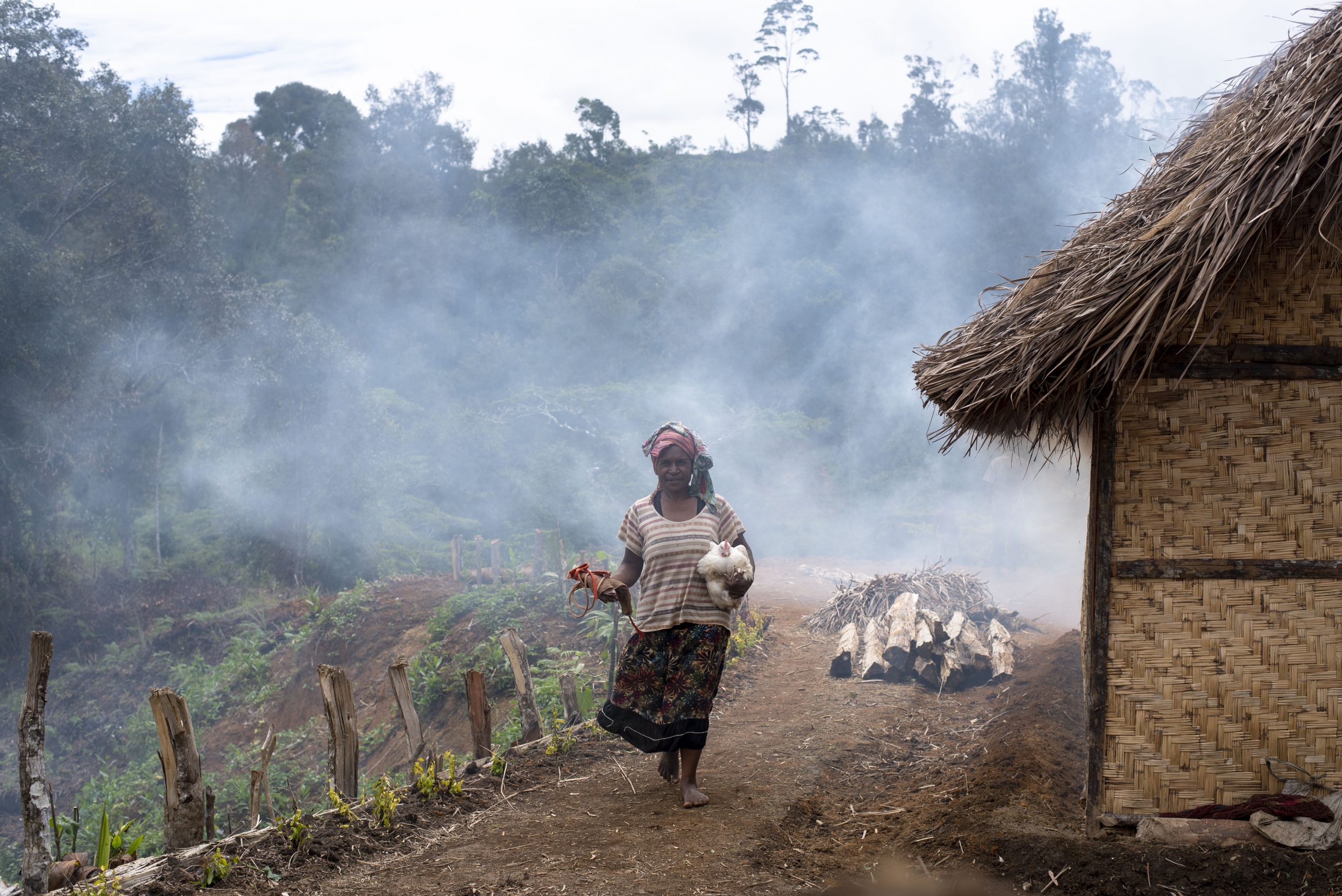
More than 33 hours flying, 8 hours driving and little sleep to get to the destination, Tari in Papua New Guinea. Would you start? We do!
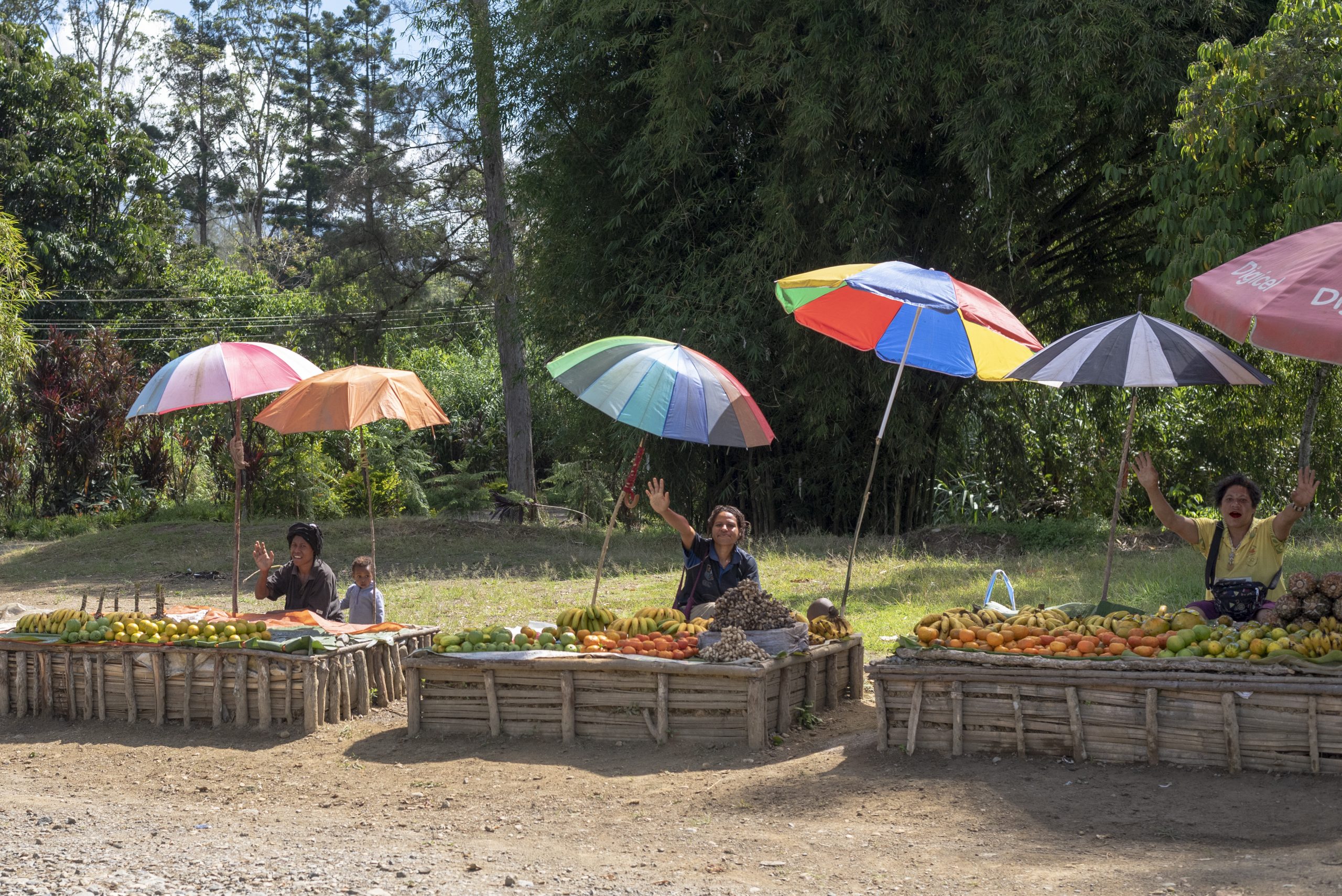
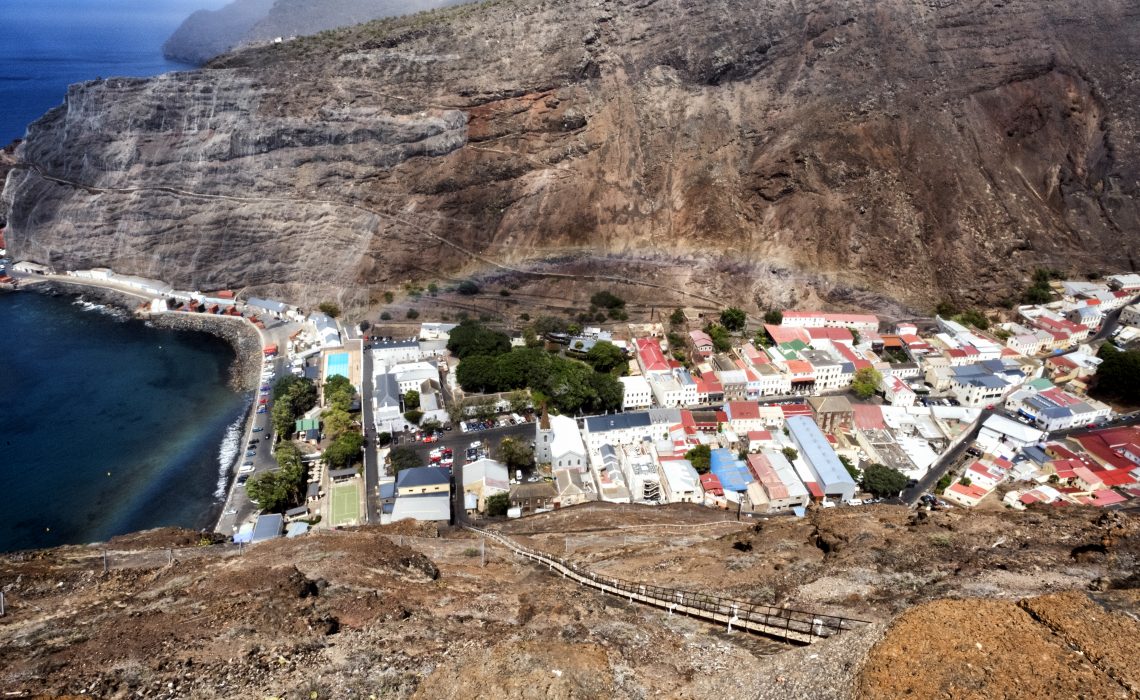
Our goal for this entire trip is of course Saint Helena, an island about 4,000 kilometers from Rio de Janeiro and 1,950 kilometers west of Angola. Saint Helena is, of course, known as Napoleon’s exile, and he was not allowed to complain.
As with Tristan da Cunha, Saint Helena does not have a deep harbor, so we cannot get off the boat directly on land here either. But unlike Tristan da Cunha, the sea is a bit calmer here and we don’t have to use the rope ladder. Instead, a walkway is lowered onto a platform from which you then step into a boat. This boat does not hold 12 but 24 people. So unloading the passengers is a lot faster.
One last time I turn around and look at the Royal Mail Ship St. Helena (RMS) where we have very nice memories. I will never drink a beef tea again without thinking about the RMS. It was a special trip, because this trip was the second-last trip of the RMS. After this she will sail one more time from Cape Town to Saint Helena, to Ascension Island and back again. Unlike the British and the Saints, it doesn’t do much to me, for them it’s a tradition, a heritage. For me now and then doom and gloom.
Finally we are there! After 12 days at sea we are finally at our final destination: Saint Helena. We soon leave the customs office behind and start discovering Jamestown at our leisure. A beautiful town with artistic buildings dating back to the 18th and 19th centuries. Jamestown is built in the shape of a V in a narrow valley between 150 meter high cliffs. There is a wide street through it called ‘Main Street’ and a number of small streets that often lead to a dead end. Several restaurants and hotels can be found on the Main Street, as well as two small souvenir shops and two supermarkets, which are closed on Wednesday afternoons. There is a post office and a local hangout located in front of ‘the Market’. There are two pubs in the village, diagonally opposite each other and a little further on is a school.fish cake by the way ”.

Dutch on Saint Helena
On our travels we often encounter a history that is less known to us in which the Dutch more often than not played a leading role. Similarly, on Saint Helena.
We decide to take a look at Jamestown’s only museum ‘The Museum of St. Helena’, which is located next to Jacob’s Ladder (a staircase of 699 steps that Jamestown with Half Tree Hollow). The pleasantly and conveniently arranged museum opened in 2002, five hundred years after the Portuguese discovered the island, and can be visited free of charge. “The island was in Dutch hands for a while,” the museum’s curator tells me. “There is no evidence of this, but it is said that the Dutch came here in 1633 and left in 1651. After all, you already had the Cape of Good Hope. ”

Jacobs Ladder (699 steps).
Right at the entrance of the museum is a huge eye-catcher: the cannon of the White Lion, a Dutch VOC ship that went down here. De Witte Leeuw was built in 1601 in Amsterdam and sailed to Asia and back many times. In 1603 the ship was on its way to the Netherlands with three other Dutch ships, loaded with spices, jewelery and other goods from Asia. As the ships approached Jamestown, they saw two Portuguese ships. The Dutch attacked the ships but did not know the waters of the Jamesbay. And one of the Portuguese ships was soon able to sink the White Lion, after which the other Dutch ships fled.
In addition to The White Lion and the Boer War, we also find a painting about Willem Merk. Willem Merk was a drug trafficker and is the only person who ever escaped from the island in a self-made boat. In the painting, which he painted himself, we see Speery Island, in the south of Saint Helena, and a sailing ship sailing away. The painting is also accompanied by a newspaper article from July 31, 1994: ‘Fleeing Dutchman’s 2,000-mile escape. Jailbreak drug runner sailed alone across Atlantic in makeshift dinghy. ‘ With the help of the Dutch embassy in Brazil, he was able to fly back to the Netherlands and was not extradited to the British. According to the article here, this was because in the Netherlands the possession of soft drugs is punished less severely and he had already been imprisoned for three years for the smuggling.
We leave the museum and walk through the photogenic Jamestown. I decide to buy some souvenirs and immediately send some tickets. Of course, after two weeks without WiFi, an internet moment at Anne’s Place cannot be missed. This turns out to be a super nice spot in the castle gardens.

Diana’s Peak, highest spot on the island (823 m). Photo: Milene van Arendonk
The dependent island
Then we decide to go for a drive with our rental car. Driving across the island by car is great, from bare steep cliffs we suddenly end up in a paradise tropical area. Suddenly, a strip of flax plants along the road obscures our view. At the beginning of the 20th century, a new economic function was found for the island: the flax plant. Introduced from New Zealand, it dramatically reduced native plant species. Rope was woven from the flax, which was used, among others, by the British postal service to bundle letters. The flax industry was the main source of income for the island until 1966. The island’s economy collapsed when the British postal service switched to synthetic rope. Brian, who we know from the boat, tells us that no new source of income has ever been found since then and that Saint Helena is heavily dependent on British support. “Every year we receive about sixteen million euros in subsidy” says Brian. When asked whether the fishing industry can improve the economic activity of the island, Brian indicates that very little is being caught around the island.

The flax plant on Saint Helena.
But in addition to flax and fish, there may be another economic highlight on the island: coffee ! Napoleon once said “the only good thing about St Helena is the coffee” . On February 10, 1733, the first coffee beans were brought to the island. These came from Yemen with Captain Philips’ ship the ‘Houghton’. Brian’s wife Brenda is convinced that the coffee is the best in the world. “Our coffee has won several awards,” she says proudly. When I enter a souvenir shop to buy this award-winning coffee, I soon find out that the St Helena coffee is not only national pride but also quite expensive. “It is the most expensive coffee in the world”says the saleswoman. I will soon taste whether it is worth this price. But I doubt whether this can become a stable source of income for the island.
But perhaps the airport, formerly known as the ‘ most useless airport in the world ‘, can attract a new economy: tourism. The Saints are quite reserved about this and despite wishing everyone a good day and waving to everyone, many Saints would rather see tourists go than come.
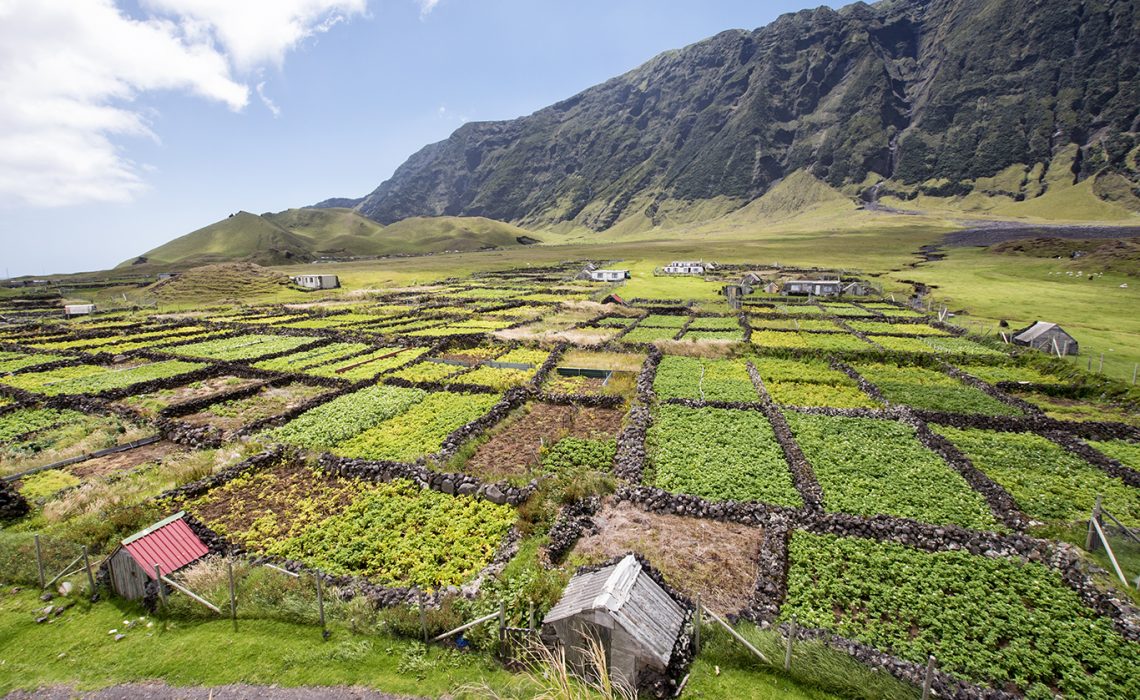
“Welcome to the remotest place on earth, welcome to Tristan da Cunha” she says cheerfully and shakes my hand. We introduce ourselves and “Oh I know you, Milene!” she shouts and gives me a hug. Kelly is a young girl from England. A few years ago she fell in love with a Tristanian when she visited the island. She is now married, has a daughter and has lived on the island for a year. We spoke on Facebook before leaving.
Tristan da Cunha is the most remote inhabited place in the world, to the delight of its inhabitants. But not for Kelly, she likes it when a boat full of tourists comes. Nine times a year a freight or expedition ship comes along and a little more often a private sailing ship, but (almost) never the RMS St. Helena comes along with so many tourists. The island is then flooded, and some like that too much.
Conrad Glass. Photo: Milene van Arendonk
Like the only police officer on the island: Conrad Glass. He is a descendant of the very first inhabitant of the island ‘William Glass’ and has his hands full with the hordes of tourists. Although there is only one road on the island, it does have a fairly sharp bend. He must also check and stamp all passports. Not only the police but also the post office are busy. Here you can buy nice souvenirs that are also made by the local population. From hand-knitted sweaters to postcards with seabirds on them and stamps of island traditions (sheep shearing, potato paws) to crocheted penguins. Whatever you spend your money on here, it goes straight back to the population.
The Albatross pub. Photo: Milene van Arendonk
There is no airport here. Not a deep harbor either. To get ashore we had to go via a rope ladder that was attached to the ship. Then we came ashore with the help of a boat with fishermen. From the boat we could already see that Tristan da Cunha is little more than a 2060 meter high volcano surrounded by the great emptiness of the Atlantic Ocean. Edinburgh of the Seven Seas, also known as ‘The Settlement’, consists mainly of low buildings with red and blue corrugated iron roofs. There are also three churches and a pub: The Albatross. Inside, the resemblance to an English pub is striking. The English flag hangs prominently above the bar, some fishermen are already having a drink and the British news is read aloud on the TV in the corner.
We decide not to waste all our time drinking in the pub and start a short walk. We follow the three kilometer long ribbon of coarse gravel that leads through the peaceful landscape with the mountain on one side and the ocean on the other. Soon we come across the Hottentot Shelter. The name of the bus stop, a small van drives up and down to the potato patches, refers to the African soldiers who camped here in 1816. They had to stop any French who wanted to liberate the exiled French Emperor Napoleon on Saint Helena via Tristan.
The island has some crazy names, and on the way to the potato fields we encounter Mile Stone and Red Body Hill, we also heard about Ridge-Where-the-Goat-Jump-Off. Places with interesting stories, Kelly tells us later. The road ends at the potato fields. These fields consist of a bunch of fields surrounded by stone walls. Small houses can be seen here and there, some built of volcanic stones. We climb a steep hill to have a nice overview of the potatoes. “These are the best potatoes in the world,” says Joe, who spent 9 months on the island as a vet. Each family has its own way of fertilizing the potatoes. One does it with remnants of the lobsters that are caught and the other does it with sheep’s wool.“For the Tristanians, potatoes are a kind of insurance,” says Joe. “If the money loses its value, they will always have their potatoes” . Not only Joe loves the Tristan potatoes, the Saints (Saint-Helena) also love them and like to import them.
On the way to the potato patches. Photo: Milene van Arendonk
Shed at potato patches. Photo: Milene van Arendonk
The potato patches. Photo: Milene van Arendonk
Once back in the Settlement, I meet up with Kelly. Kelly belongs to the ‘Green’ family. Green is the largest family on the island and consists of 33 men and 33 women. In addition, the family has a link with the Netherlands. Peter Groen was born in Katwijk in 1808 and was shipwrecked off the coast of Tristan da Cunha in 1836. He stayed there for the rest of his life, got married and eventually became spokesman / governor of the island. Groen changed his name to Peter Green and made himself useful, among other things, by rescuing drowning people. In the ‘News of the Day’ in 1897 he was even referred to as the ‘uncrowned king of Tristan da Cunha’.
Not a day without wind on Tristan da Cunha. So the laundry dries quickly but the line needs some help. Photo: Milene van Arendonk
Tristan’s internet cafe. More often closed than not. Photo: Milene van Arendonk
“Living on Tristan is like living in a bubble,” says Kelly. Your wallet will not be stolen here. You don’t see everyone posting photos on Instagram here. You will not see the latest films here immediately after they come out. You celebrate birthdays together here, and for a whole week. Very different from, for example, England. But she does not regret her adventure. On the contrary. “Everyone here cares about everyone, everyone helps each other, that’s the great thing about living on an island with only 250 people” .
After a few hours I leave the island again. I wave to Kelly and tell her we can keep in touch via Facebook. People here today live less isolated from the rest of the world because of the use of the internet. A day on Tristan da Cunha is of course far too short, but another special island awaits.